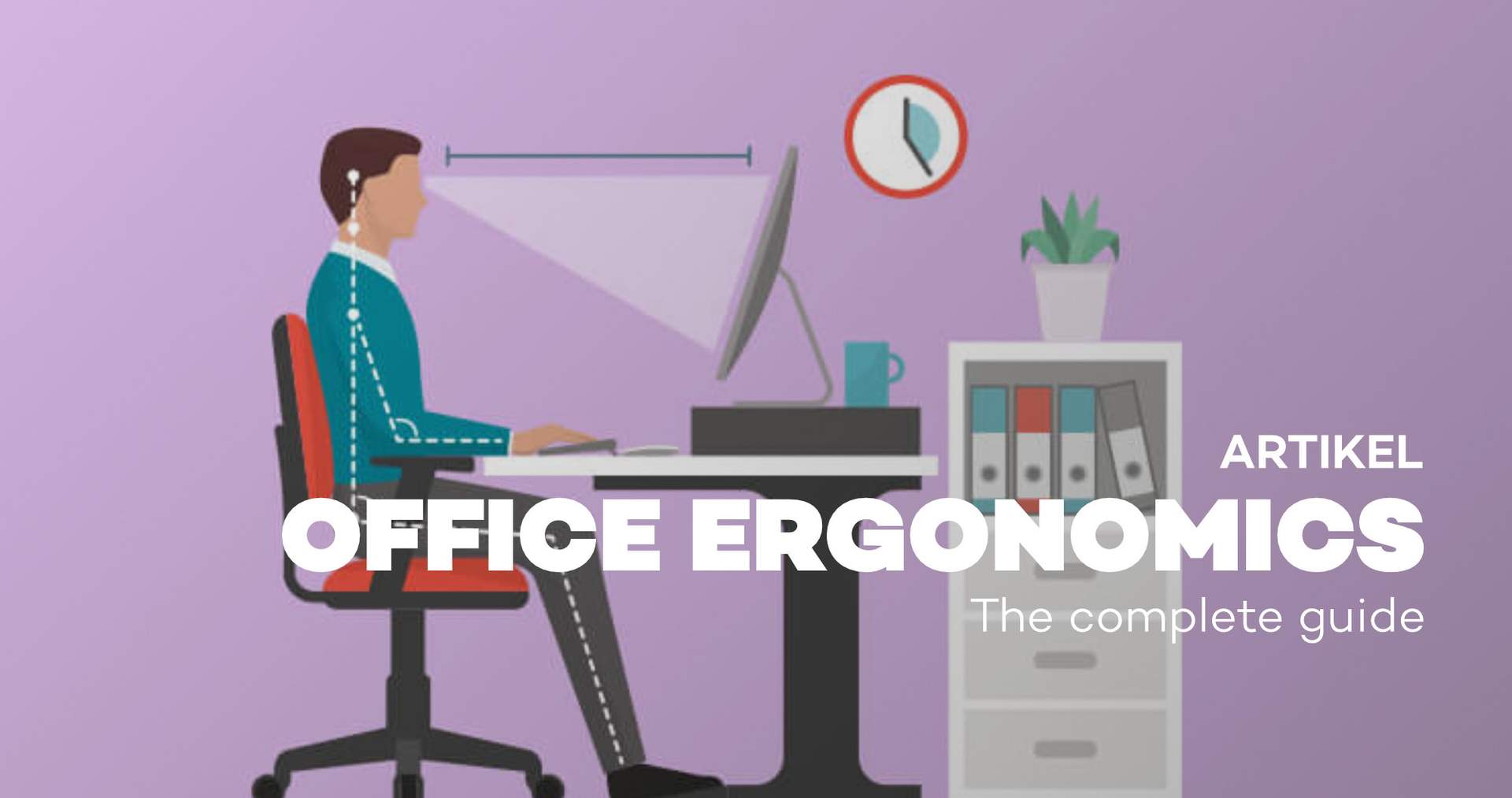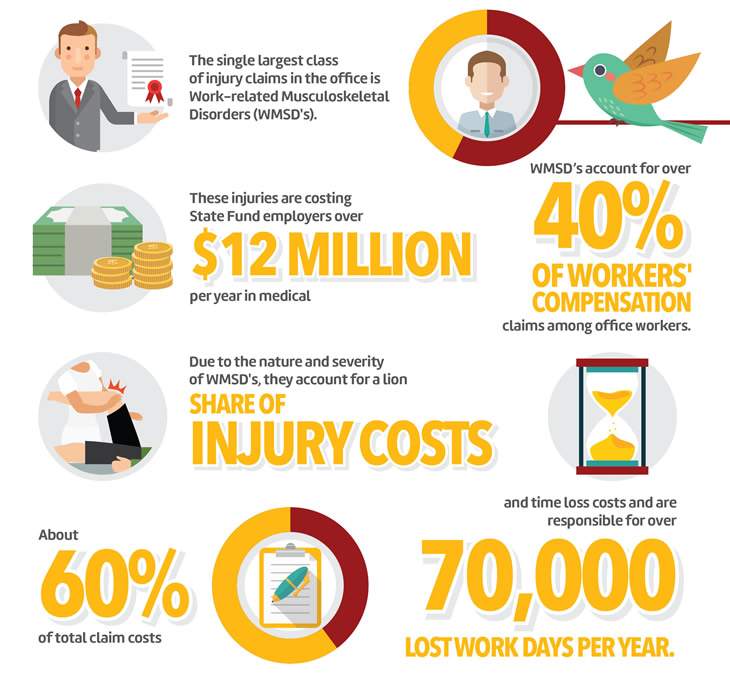
Poor Office Ergonomics: The Cause of Your Discomfort
Did you know that, statistically, nearly one third of all time taken off from work is due to injuries stemming from poor office ergonomics?
In fact, office work can actually affect your body in more damaging ways than many physically demanding tasks. After a long day at the office, have you ever felt a stiff neck, sore shoulders, or back pain? This is due to poor office ergonomics.
Office ergonomics research has shown that sitting for extended periods of time is actually doing harm to your spine, shoulders, back, and neck. Knowing this, it should come as no surprise that a majority of the discomfort you feel after a long work day is actually stemming from poor office ergonomics. Moreover, when your workspace isn’t designed with office ergonomic features in mind, bodily discomfort can be felt even stronger. Here is the complete guide to help you to understand the dangers of poor office ergonomics and to set up a healthy office ergonomic environment.
What Does Office Ergonomics Actually Mean?
Ergonomics (from the Greek word ergon meaning work and nomoi meaning natural laws), is in essence the study of designing equipment, devices and processes that fit the human body. The two terms "human factors" and "ergonomics" are essentially synonymous. Ergonomics takes all human factors into consideration, including height, weight, sight, feel, etc.
Proper ergonomic design is necessary to prevent repetitive strain injuries and other musculoskeletal disorders, which can develop over time and can lead to long-term disability.
Ergonomic design is often factored into office products, hence the name office ergonomics. These products can include desks, chairs, keyboards, computer monitors, and everything else in between. One example of products designed with office ergonomics in mind is ViewSonic's Office Ergonomic Monitor collection which has been designed specifically for the purpose of providing office monitors that improve comfort at work and reduce work related injuries.
Ergonomically designing these types of products is particularly beneficial because a large number of people use them for extended periods of time every day. Using poorly designed or poorly positioned products in the office for extended periods of time can place unnecessary strain on the body.
Common Injuries as a Result of Poor Office Ergonomics
Musculoskeletal injuries and vision problems are common injuries resulting from poor office ergonomics. Your workers can get injured when their bodies are required to adapt to tasks that overextends their body's physical limitations. According to the Washington State Office Ergonomic Research, the single largest class of injury claims in the office is Work-related Musculoskeletal Disorders (WMSD's). WMSD’s account for over 40% of workers' compensation claims among office workers. These injuries are costing State Fund employers over $12 million per year in medical and time loss costs and are responsible for over 70,000 lost work days per year.
Due to the nature and severity of WMSD's, they account for a lion share of injury costs - about 60% of total claim costs. WMSD's are prolonged injuries that may become worse over time and therefore become costlier when compared to sudden injuries such as a slip and fall. This also means that it can take a long time to get an employee back to work, resulting in even higher medical and time loss costs.
In addition, there can be higher hidden costs when workers use more sick leave or slow their work pace during the period before a claim is filed when WMSD symptoms begin to develop.
